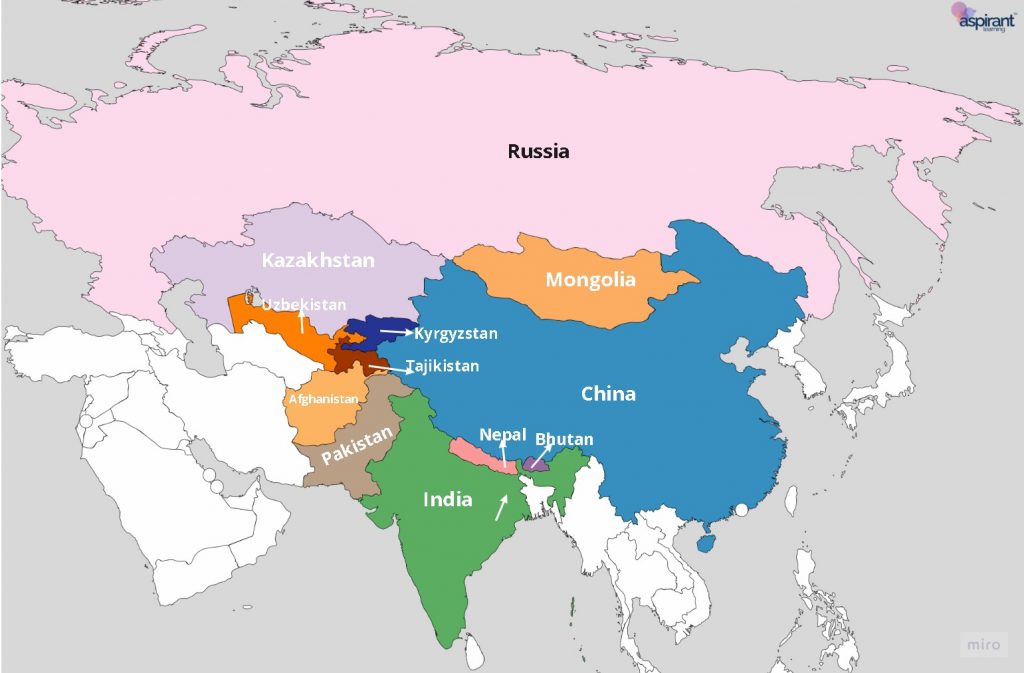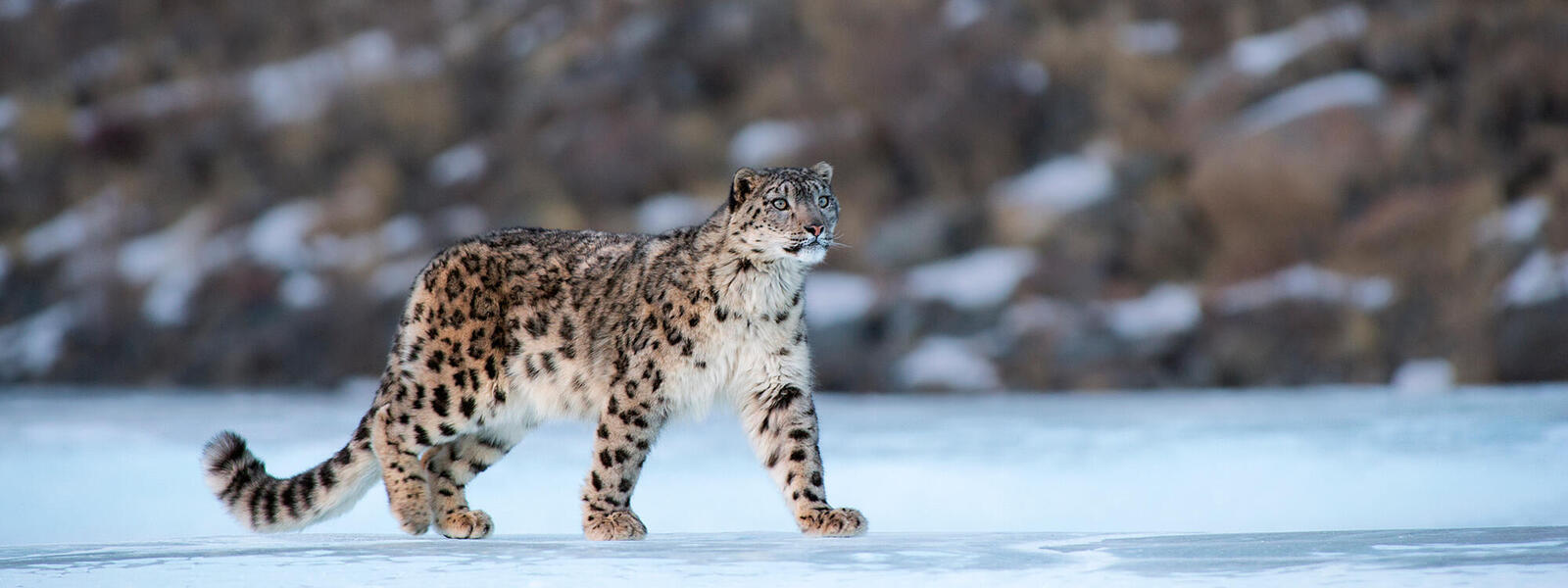News Highlight
A recent study by the Zoological Survey of India (ZSI) on the Snow Leopard (Panthera uncia) has given exciting insights into the elusive mountain cat and its prey species.
Key Takeaways
- The study under the National Mission on Himalayan Studies aimed at examining how the predator used habitat in the presence or absence of its prey species and vice-versa.
- Findings of the Study
- The study revealed a strong link between habitat use by Snow Leopard and its prey species, Siberian ibex and blue sheep.
- The study found that the snow leopard detection probability was high if the site was used by its prey species, i.e., ibex and blue sheep.
- In the case of the prey species, the likelihood of detection was low when the predator was present and detected
Snow Leopard
- The snow leopard is a large cat native to Central and South Asia mountain ranges.
- Scientific Name: Panthera uncia
- It is the State animal of Himachal Pradesh.
Habitat
- It has a 12-country home range:

- In India:
- Western Himalayas: Jammu and Kashmir, Himachal Pradesh
- Eastern Himalayas: Uttarakhand, Sikkim and Arunachal Pradesh
Protection Status of Snow Leopard
- IUCN-World Conservation Union’s Red List: Vulnerable
- Convention on International Trade of Endangered Species (CITES): listed in Appendix I
- Indian Wildlife (Protection) Act 1972: listed in Schedule I
- It is listed in the Convention on Migratory Species (CMS), affording the highest conservation status to the species globally and in India.
Prey of Snow Leopard
- Siberian ibex (Capra sibrica)
- Blue sheep (Pseudois nayaur)
- Himalayan tahr (Hemitragus jemlahicus)
- Argali (Ovis ammon)
- Marmots (Marmota himalayana).
Why they matter?
- Snow leopards play a vital role as a top predator, an indicator of the health of their high-altitude habitat, and, increasingly, an essential indicator of the impacts of climate change on mountain environments.
- If snow leopards thrive, numerous other species and the largest freshwater reservoirs on the planet will flourish.
Major Threats
- Climate Crisis
- The climate crisis poses the greatest long-term threat to snow leopards.
- Impacts from a warming planet could result in a loss of up to 30% of the habitat in the Himalayas alone.
- Illegal Wildlife Trade
- They have long been killed for their beautiful fur, but their bones and other body parts are also used in traditional medicine.
- Human-Animals Conflict
- Snow leopards are often killed by local farmers and herders, which occurs when the leopards prey on livestock such as sheep, goats, horses, and yak calves.
- The animals that snow leopards typically hunt—such as the Argali and blue sheep—are also hunted by local communities.
- As their natural prey becomes harder to find, snow leopards are forced to kill livestock for survival.
- Habitat Fragmentation
- The habitat range continues to decline from the impacts of the climate crisis, human disturbance, and increased use of grazing space.
- This development increasingly fragments the historical range of the species.
Government Initiatives for the Conservation
- The Government of India has identified the snow leopard as a flagship species for the high-altitude Himalayas.
- Project Snow Leopard (2009)
- It is an initiative for strengthening wildlife conservation in the Himalayan high altitudes.
- Aim: To promote a knowledge-based and adaptive conservation framework that fully involves the local communities, who share the snow leopard’s range, in conservation efforts.
- Global Snow Leopard and Ecosystem Protection (GSLEP) Programme
- The GSLEP is a high-level inter-governmental alliance of all the 12 snow leopard range countries.
- India is also a party to the Global Snow Leopard and Ecosystem Protection (GSLEP) Programme since 2013.
- Himal Rakshaks (mountain guardians)
- In North Sikkim, volunteer Himal Rakshaks (mountain guardians) are working to monitor wildlife and halt poaching activities in the Kanchendzonga Biosphere Reserve.
- In 2019, First National Protocol, also launched on Snow Leopard Population Assessment, which has been very useful for monitoring populations.
Pic Courtesy: Business Standard
Content Source: The Hindu



